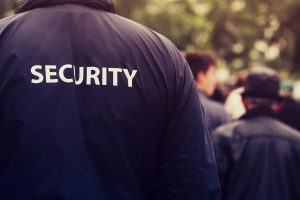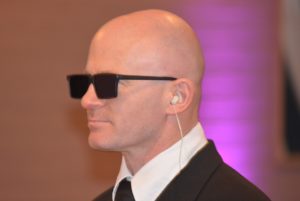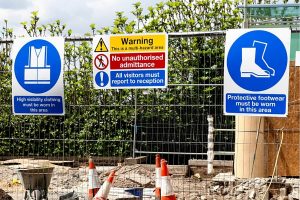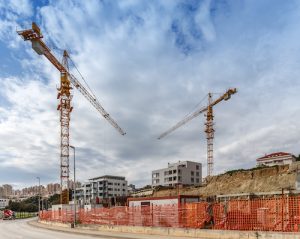Do Thermal Cameras Make Sense for My Site?
Using Thermal Cameras for Detection
Video surveillance, or CCTV, has been around for decades. But what was once grainy, hard-to-decipher camera footage has steadily improved in image quality as digital technology has become more sophisticated. The latest step forward has been thermal imaging, which allows its user to improve the visibility of objects in the dark via infrared radiation. Using thermal cameras for detection can provide round-the-clock security for a site, as well as greater detail (via heat signatures) of people in relation to one another and the objects around them.
But does this developing technology make sense for your site? The answer may vary depending on your company’s needs. Below is a description of thermal technology and an exploration of its advantages and disadvantages for a business, so you can make the best decision for you.
How Thermal Imaging Works
Thermal imaging technology has been around since 1929, when Kálmán Tihanyi invented a camera for British air defense. The technology uses infrared radiation, which bounces off objects within view and range of the device being used. A number of infrared detectors emit infrared beams that create an intricate pattern called a thermogram.
The thermogram is converted into electrical impulses that are sent to a signal processing unit, which produces an image for display. This image appears in various colors depending on the heat of the element being scanned; what some refer to as “real night vision” is the result, with hotter images like bodies emitting a greater amount of distinguishing light. Modern day thermal imaging equipment is more powerful than the first thermal cameras. The equipment has become more lightweight, and computer technology has allowed for improvements in the images displayed. The cost of the best thermal imaging equipment has also dropped considerably in recent years.
Thermal Cameras: Pros and Cons
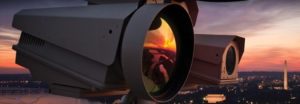 Anyone can benefit from using thermal imaging as part of their security solution. The technology has proven to work and is affordable. However, though thermal cameras will work anywhere, a few factors might define whether or not they truly make sense for your site. Thermal cameras need to be installed as part of an overall solution, adding value rather than being a primary form of security.
Anyone can benefit from using thermal imaging as part of their security solution. The technology has proven to work and is affordable. However, though thermal cameras will work anywhere, a few factors might define whether or not they truly make sense for your site. Thermal cameras need to be installed as part of an overall solution, adding value rather than being a primary form of security.
One of the most common uses of thermal cameras is in perimeter security, especially covering long distances. Often used along with video-voice technology, the cameras act as a deterrent, preventing people from entering your site. Thermal cameras do not pick out faces, colours, or types of clothing, but the cameras do have a long range of movement detection, allowing your security team to have advanced warning of trouble. Bodies and engines give off more heat (and thus more thermal light), so a thermal camera can detect long before a standard camera could. If you need round-the-clock advance warning on a remote site that people are approaching your premises, then thermal imaging makes a great deal of sense.
Large, remote sites that require comprehensive perimeter security can also benefit from the use of thermal cameras. A large perimeter fence makes patrolling with guards difficult; a thermal camera extends the guards’ vision and allows them to respond better to suspicious movement. It also helps distinguish harmless movement (from wild animals, for instance) from human activity that might be a red flag. Thermal cameras can also help overcome the energy problems CCTV cameras pose. To manage extra-large sites a vast number of shorter range conventional cameras are needed, but such sites often lack enough energy resources to fully utilize them. With their longer range, thermal cameras can be used as a first line of defense. As part of a combined and well-planned security solution, remote or on-site command centers are informed of movement via thermal imaging, and can cue the conventional cameras to monitor those areas.
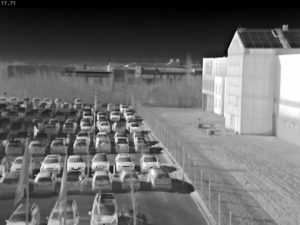 Thermal cameras can also help sites to monitor areas with complex layouts: multiple kinds of equipment or machinery, many small outside buildings, or easy-to-hide-in areas. Thermal imagining can see through some items and shapes can be picked out with ease. Thermal cameras can also also assist with emergencies like arson, quickly identifying the fire so the relevant procedures can be implemented sooner and faster. One problem thermal cameras struggle against is the effect of weather. Inclement weather like snow, rain and fog can affect the range of the camera. Likewise, on hot sunny day or in places such as deserts a heat image of a man will be less clear as the heat around is higher. On a cold day or in places with snow, the heat signature of a man or vehicle is increased. Understanding the role weather plays is an important part in determining if thermal cameras make sense for your business.
Thermal cameras can also help sites to monitor areas with complex layouts: multiple kinds of equipment or machinery, many small outside buildings, or easy-to-hide-in areas. Thermal imagining can see through some items and shapes can be picked out with ease. Thermal cameras can also also assist with emergencies like arson, quickly identifying the fire so the relevant procedures can be implemented sooner and faster. One problem thermal cameras struggle against is the effect of weather. Inclement weather like snow, rain and fog can affect the range of the camera. Likewise, on hot sunny day or in places such as deserts a heat image of a man will be less clear as the heat around is higher. On a cold day or in places with snow, the heat signature of a man or vehicle is increased. Understanding the role weather plays is an important part in determining if thermal cameras make sense for your business.
Ultimately, however, for the best answer to the question, “do thermal cameras make sense for my site?” it is best to seek professional advice.
If you would like to get a free site plan and pricing, please contact us and submit your request today.
Be sure to ask about SMART Security Pros’ no upfront cost plans. Our plans allow you to get started today with installing monitored video surveillance with no large out-of-pocket expenses.




